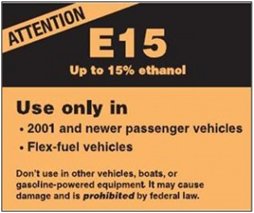by Jon LeSage, editor and publisher, Green Auto Market
Here’s my take on the 10 most significant and interesting occurrences during the past week…….
 Battle over biofuels: Conflict and confusion over biofuel blends in gasoline – and who will do the blending – continue to shake up Washington. Renewable Fuels Association President Bob Dineen told Reuters last week that Carl Icahn, an oil industry billionaire and advisor to the Trump administration, had told Dineen that the administration would be taking a favorable position for refiners such as corn ethanol producers. The fuel blending of about 10% ethanol to gasoline would be sent down the supply chain to gasoline marketers through an executive order by the president, Dineen said. Icahn and the White House later denied this was said to Dineen. Biofuel groups and producers have been upset that Icahn has been playing this role for the White House. The oil executive demanded during the election campaign that the obligation and costs should go to fuel blenders and not to oil companies and their supply chain partners. Several biofuel companies have also been upset with RFA for taking what had appeared to be a position opposing their stance on the matter. As of Monday, oil refiners including Valero Energy Corp. and CVR Energy Inc. (in which Icahn owns a majority stake) currently have to show environmental regulators they are meeting annual mandates; they’ve urged the federal government to push this compliance further downstream to fuel blenders and integrated oil companies. The White House says it’s taking this request under review. In other related news, U.S. ethanol production set a new record of 15.33 billion gallons in 2016, according to data from the U.S. Energy Information Administration (EIA). The EIA data showed that the average gallon of gasoline likely contained slightly more than 10.0% ethanol in 2016. The American Petroleum Institute (API) estimates that Environmental Protection Agency rules on 2017 biofuel volumes will put the ethanol-to-gasoline ratio at 10.4%, higher than the 9.7% ration recommended by the oil industry association.
Battle over biofuels: Conflict and confusion over biofuel blends in gasoline – and who will do the blending – continue to shake up Washington. Renewable Fuels Association President Bob Dineen told Reuters last week that Carl Icahn, an oil industry billionaire and advisor to the Trump administration, had told Dineen that the administration would be taking a favorable position for refiners such as corn ethanol producers. The fuel blending of about 10% ethanol to gasoline would be sent down the supply chain to gasoline marketers through an executive order by the president, Dineen said. Icahn and the White House later denied this was said to Dineen. Biofuel groups and producers have been upset that Icahn has been playing this role for the White House. The oil executive demanded during the election campaign that the obligation and costs should go to fuel blenders and not to oil companies and their supply chain partners. Several biofuel companies have also been upset with RFA for taking what had appeared to be a position opposing their stance on the matter. As of Monday, oil refiners including Valero Energy Corp. and CVR Energy Inc. (in which Icahn owns a majority stake) currently have to show environmental regulators they are meeting annual mandates; they’ve urged the federal government to push this compliance further downstream to fuel blenders and integrated oil companies. The White House says it’s taking this request under review. In other related news, U.S. ethanol production set a new record of 15.33 billion gallons in 2016, according to data from the U.S. Energy Information Administration (EIA). The EIA data showed that the average gallon of gasoline likely contained slightly more than 10.0% ethanol in 2016. The American Petroleum Institute (API) estimates that Environmental Protection Agency rules on 2017 biofuel volumes will put the ethanol-to-gasoline ratio at 10.4%, higher than the 9.7% ration recommended by the oil industry association.- Green car sales in February: Sales of hybrid and plug-in vehicles were up sizably from January in the usual seasonal sales pattern, and both categories beat the overall market according to HybridCar’s Dashboard. Total light-duty vehicles sales were down 1.1% from February 2016, but hybrids saw an increase of 16.3% and plug-ins saw a leap of 45.12% over the previous year. The Chevy Bolt continued to do well, finishing fifth for all plug-in electrified vehicles sold in the U.S. during February. The Chevy Volt had another leading month, finishing in first place with 1,820 units sold; that compares with the No. 2 Tesla Model S, finishing at about 1,700 units sold. For hybrid vehicles, the Toyota Prius Liftback took its first position back from the Ford Fusion Hybrid but both vehicles have sold at nearly the same totals so far in 2017.
- EPA likely to issue revised fuel economy: The U.S. Environmental Protection Agency is expected to reverse course this week on the 2022-25 phase of the fuel economy and emissions standards. The unexpected decision made by the agency at the very end of the Obama administration to approve the proposal and cut short the public comment period has been a source of tension with automaker executives and Washington officials. Last week, auto trade groups representing Ford, General Motors, Honda, Toyota, Volkswagen, and others asked recently approved EPA Administrator Scott Pruitt to withdraw the Obama administration’s decision to finalize the rule in January. That had cut short the timing for giving public comments, which was originally supposed to go until April 2018. They would also like to see the rule become more favorable to automakers than what was finalized under the Obama administration. The EPA notice coming out soon is expected to state that the agency will work in tandem with the U.S. Transportation Department to set consistent standards in the ruling, a source said.
- Trouble keeping Tesla’s talent: Pressure to get the Tesla Model 3 out on time has led to tough working conditions at the company – and exodus of management. CFO Jason Wheeler’s departure, just 15 months after he joined Tesla from Google, will be the latest in a round of executives leaving the company. Former execs speaking confidentially said it has to do with long work hours prepping for high-volume production and a tense working environment that reflects the persona of CEO Elon Musk. Of course, setting up shop in Silicon Valley is known to run the risk of high-churnover rate. A Tesla spokesman said the company’s attrition rate was below average among technology companies.
- Uber facing heavy criticism: Uber is feeling a “blowback” over the aggressive fighter approach taken by CEO Travis Kalanick and its corporate culture, with the latest being an apology sent to staff by Kalanick over a conflict he’d engaged in with an Uber driver captured on video. Kalanick and others at the ride-hailing giant are known for plunging into new markets around the world, price-war fighting Lyft and overseas competitors, and taking on lofty goals like deploying self-driving and flying cars. The company had been hit hard by news coverage and social media posts leading to Kalanick quitting President Donald Trump’s economic advisory panel over the immigration ban; having a female engineer protest over alleged sexual harassment; being sued by Alphabet’s Waymo over claims its self-driving car’s intellectual property had been stolen; and using a tool called “Greyball” used to fool regulators into thinking the company is not providing ride services in markets where it’s not supposed to be operating. Lyft, its toughest U.S. competitor, is quietly looking to raise $500 million in funding to expand; smaller ridesharing companies such as Juno are able to take advantage of frustration over pay to poach Uber drivers. “I must fundamentally change as a leader and grow up,” Kalanick, wrote in a note to Uber employees last week. “This is the first time I’ve been willing to admit that I need leadership help and I intend to get it.”
- What will happen to Ampera-e?: The future of the Opel Amera-e, built on the Chevrolet Bolt platform, is up in the air now that General Motors has sold its stake in the Opel/Vauxhall subsidiary to French automaker PSA Group. The $2.3 billion dollar sale will make PSA the second-largest automaker in Europe. PSA will gain intellectual property licenses from GM as vehicles transition over to PSA platforms. It may be that the originally planned launch of the Bolt as the Ampera-e in Europe will stick to that plan and roll out later this year. Green Car Congress reports that GM and PSA expect they will collaborate on further deployment of electrification technologies. PSA may also source long-term supply of fuel cell systems from the GM/Honda joint venture.
- Maven lengthens sharing time: General Motors’ Maven carsharing division has launched a four-week rental plan through a program its calling Maven Reserve; that adds to its previous longest rentals by 24 days. Carsharing members in Los Angeles and San Francisco can now schedule rental of a Chevrolet Volt or a Chevrolet Tahoe for an hourly, daily, or monthly fee, the company said on Friday. Markets being aimed at include entertainment industry people in L.A. and entrepreneurs in San Francisco. It’s expected to expand later to other markets.
- Workplace charging in NYC: Calstart yesterday launched “Charge to Work,” a first-of-its-kind electric vehicle workplace charging initiative to increase the adoption of EVs in the New York City area. It’s a three-year marketing and outreach campaign seeking to bring support from over 100 businesses that will encourage their employees to replace their conventional gasoline-engine vehicles with clean and efficient EVs. Announced by New York Governor Andrew Cuomo, Charge to Work supports the governor’s Charge NY program, which is accelerating the growth of the electric vehicle market in New York State through education, research, consumer outreach and financial support for the installation of charging stations across New York. The goal is to spur 450 electric vehicles (EVs) and the installation of 132 Level 2 EV charging ports.
- 2,150 PHEV pickups sold: Workhorse Group Inc. is now working with Clean Fuels Ohio to bring 500 units of the W-15 Plug-In Electric Pickup trucks to Ohio-based fleets. The company says that, overall, it has received Letters of Intent for 2,150 units of its upcoming plug-in hybrid pickups. The company has received LOIs from Duke Energy, Portland General Electric, the City of Orlando, Southern California Public Power Authority, Clean Fuels Ohio, and one other utility. The company currently builds medium-duty PHEV work vans for several fleet companies including FedEx, Penske, UPS, Ryder, DHL, USPS, and more.
- Lucid Air details: During a recent test drive, startup Lucid Motors revealed more details on its upcoming luxury electric car, the Lucid Air. The starting price is $165,000 for the Launch Edition, in which 255 units will be made in 2019. That one gets a 130 kWh battery pack that can carry the car about 400 miles. After that, the Air will see production scaled up to build a cheaper edition. That one will have a 100 kWh battery with about 300 miles of range. Before any of these electric cars roll out, the Lucid will have to put in place its $700 million production plant in Casa Grande, Ariz., which is slated to start production in 2018.



